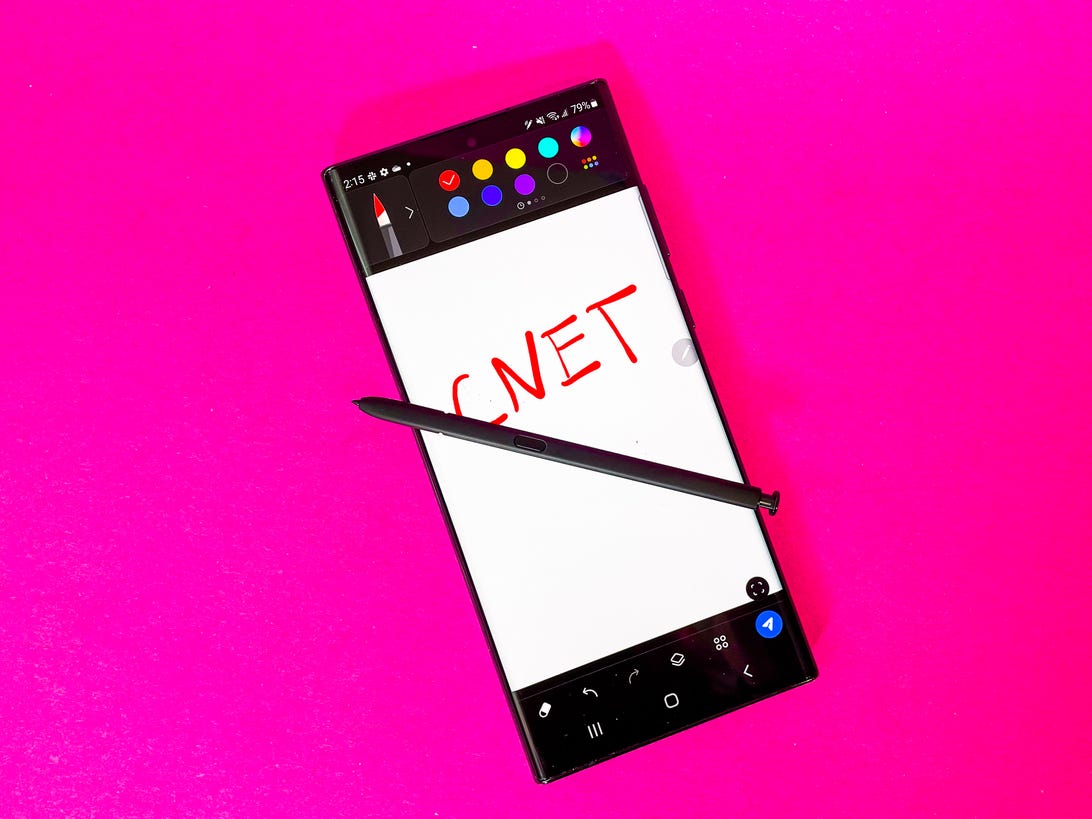
Samsung’s Galaxy S22 Ultra.
Lisa Eadicicco/CNET
The Galaxy S22 Ultra sits at the top of Samsung’s flagship S phone lineup for 2022, boasting a tricked-out four-lens camera system, a gigantic screen and an S Pen stylus you can stow inside the phone. But all these impressive specs come with a $1,200 price tag, making the S22 Ultra one of Samsung’s most expensive phones.
That’s why it’s important to think carefully about whether it’s time to upgrade to the Galaxy S22 Ultra. In many cases, the most important factors to consider will be camera quality and the S Pen. If you have a relatively recent phone like the Galaxy S21 Ultra or Note 20 Ultra, you don’t need to upgrade just yet. The S22 Ultra is more of an iterative update to those devices, and you’ll get more for your money by holding onto your device for a longer period of time.
Read more: The Exciting Gadgets We Want From Samsung This Year
You’re much more likely to notice the Galaxy S22 Ultra’s new features when coming from a phone that’s at least 3 years old. That said, it’s also worth noting that the older your phone is, the less likely it is to continue getting the latest software updates. Samsung is guaranteeing four generations of Android operating system updates on phones in its families of Galaxy S22, S21 and Z devices, as well as certain Galaxy A phones. It previously committed to three years of updates, meaning some older phones like the Galaxy S10 and Note 10 might be close to the end of their software update cycle.
You’ll also want to consider some of the features present on older phones that Samsung has eliminated on newer models. Samsung’s new phones don’t have expandable storage, for example, but the Galaxy Note 20 Ultra, S20 Ultra and Note 10 Plus do. Samsung also phased out MST support for Samsung Pay, the technology that enables the payment service to work with older terminals that don’t support NFC, starting with the Galaxy S21 line in the US. (MST is still available in select global markets.)
Read on to learn more about how the Galaxy S22 Ultra compares with Samsung’s older high-end phones.
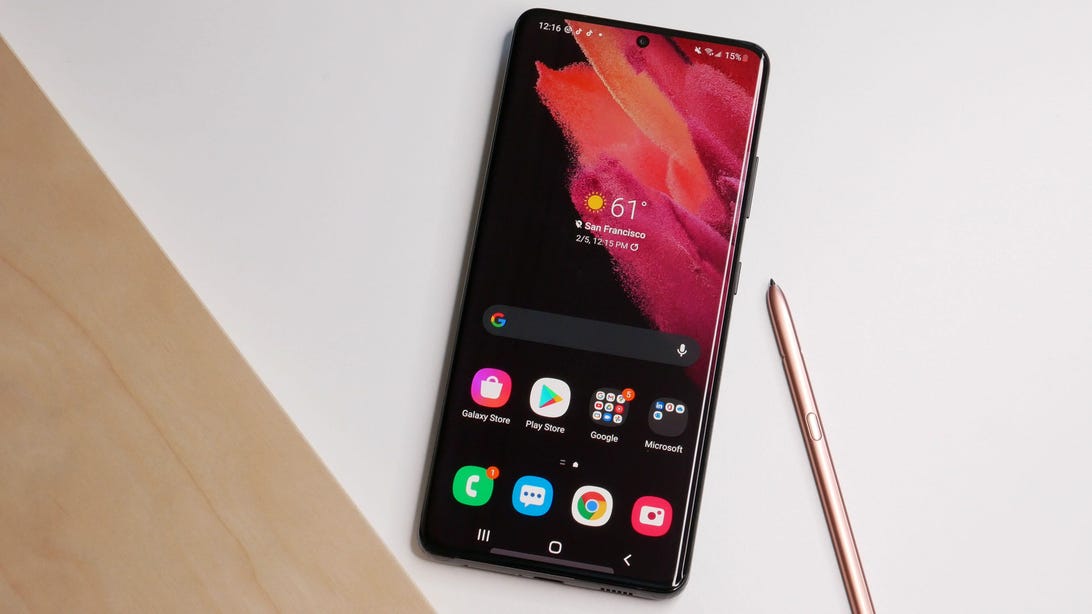

The Galaxy S21 Ultra.
Lexy Savvides/CNET
Galaxy S22 Ultra vs. Galaxy S21 Ultra
If you have a Galaxy S21 Ultra, there’s no need to upgrade yet. The Galaxy S22 Ultra is an iterative update to its predecessor. It comes with a newer processor (Qualcomm Snapdragon 8 Gen 1 or Samsung’s latest Exynos chip depending on the market), a camera that can perform better in low light and an S Pen that you can store inside the device.
But those reasons alone aren’t enough to spend on a new device, especially since you can purchase an S Pen for the Galaxy S21 Ultra separately. The Galaxy S22 Ultra’s improved low-light photography is useful, but its camera system is otherwise very similar to the Galaxy S21 Ultra’s. Both devices have a 108-megapixel main sensor, a 12-megapixel ultrawide camera and two 10-megapixel telephoto lenses that provide a 10x optical zoom. Their screens are equal in size and both support refresh rates of up to 120Hz for smoother scrolling.
That’s a detailed way to say the overall experience is essentially the same on the S21 Ultra and S22 Ultra, with some iterative upgrades to the camera and included S Pen.
The bottom line: There’s no major reason to upgrade to the S22 Ultra if you have the Galaxy S21 Ultra. The updates are mostly iterative and will be more noticeable when upgrading from an older phone. If you’re a Galaxy Note fan looking to store your S Pen inside the Galaxy S21 Ultra, you’re better off buying a case that includes a storage slot for the stylus.
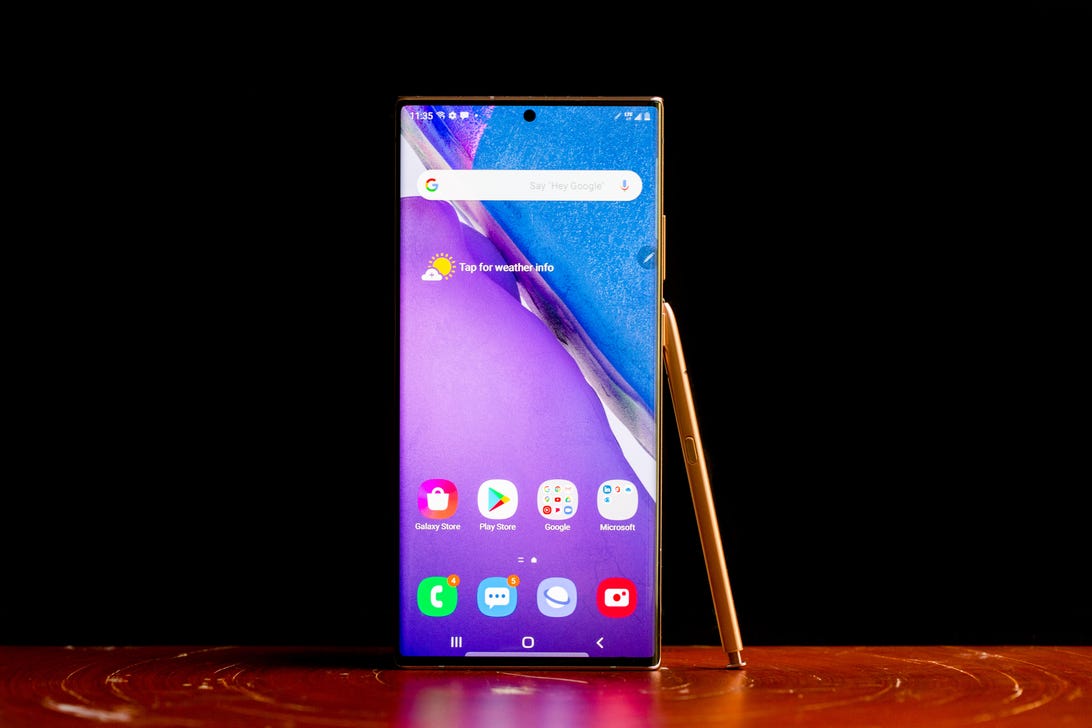

Samsung’s Galaxy Note 20 Ultra.
Angela Lang/CNET
Galaxy S22 Ultra vs. Galaxy Note 20 Ultra
The Galaxy Note 20 Ultra is less than 2 years old, which means it should have plenty of mileage left in it. There isn’t much to be gained from the S22 Ultra other than its camera improvements, which are appreciated but likely aren’t enough to justify upgrading for most people.
Both phones have a 108-megapixel main camera and a 12-megapixel ultrawide camera, although the S22 Ultra has a newer version of the main sensor with better autofocus and dynamic range. Where they really differ, however, is in their zoom capabilities. The Galaxy S22 Ultra has two 10-megapixel telephoto lenses, while the Note 20 Ultra only has one 12-megapixel telephoto lens. As a result, the Galaxy S22 Ultra can achieve a closer zoom both optically and digitally (10x optical zoom and up to 100x digital zoom), compared with the Galaxy Note 20 Ultra (5x optical zoom, up to 50x digital zoom).
And of course, the Galaxy Note 20 Ultra is missing Samsung’s recent improvements to low-light photography that debuted with the Galaxy S22 series. The S22 Ultra also takes better portraits than the Note 20 Ultra since it’s better at distinguishing fine details, my colleague Lexy Savvides wrote in her recent comparison of the two phones.
The Galaxy S22 Ultra also has a sharper 40-megapixel front camera than the Galaxy Note 20 Ultra’s 10-megapixel selfie camera. That might not matter to everyone, but it could be an important consideration if you spent a lot of time on video calls.
The Galaxy S22 Ultra also comes with a newer processor and a larger battery, although the difference doesn’t seem to be game-changing. Both phones are capable of lasting an entire day, according to CNET’s S22 Ultra and Note 20 Ultra comparison. The Galaxy S22 Ultra would typically have 20% of its battery left by the end of the day, while the Note 20 Ultra would have 10% to 15% of its battery remaining. Our test applies to the Qualcomm Snapdragon-powered version of these phones, so it’s possible that the Exynos versions could differ. And both phones come with Samsung’s S Pen stylus for taking notes, drawing and marking up documents.
There are also a couple of small trade-offs to be made by upgrading from the Note 20 Ultra to the S22 Ultra. Samsung’s newest high-end phone has a slightly smaller screen than the Galaxy Note 20 Ultra (6.8 inches versus 6.9 inches). It also lacks a microSD card slot for expandable storage, unlike the Note 20 Ultra, which can support up to 1 terabyte of additional space.
The bottom line: You can hang on to your Galaxy Note 20 Ultra for a little longer. Unless you really want a 100x digital zoom and slightly longer battery life.
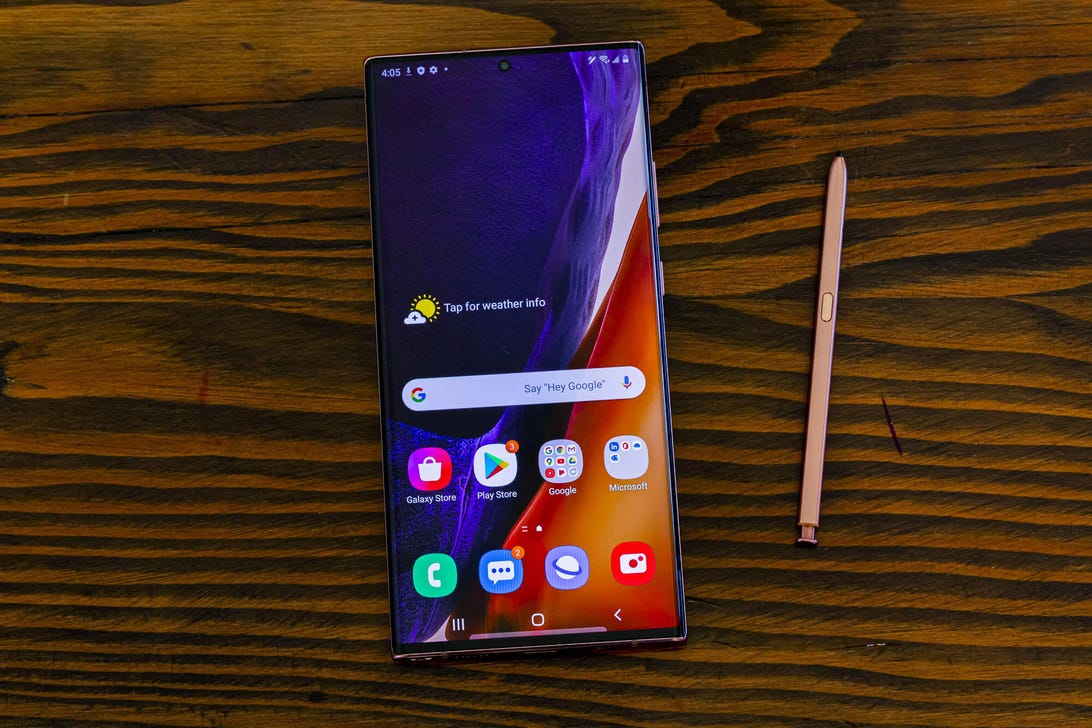

Samsung’s Galaxy Note 20.
Galaxy S22 Ultra vs. Galaxy Note 20
Once again, the biggest difference between the Galaxy S22 Ultra and Galaxy Note 20 is in its camera. The Galaxy S22 Ultra also has a larger and sharper screen, a bigger battery and a newer processor than the Galaxy Note 20. Most people probably don’t have to upgrade just yet. But there’s a stronger case for upgrading from the Note 20 than from the Note 20 Ultra since the regular model also has a smaller screen and less capable camera than its bigger sibling.
The Galaxy Note 20 has three rear cameras: a 12-megapixel main sensor, a 12-megapixel ultrawide sensor and a 64-megapixel telephoto lens. You get a 3x optical zoom on the Galaxy Note and up to a 30x digital zoom. The Galaxy S22 Ultra improves on this in several ways. It comes with four rear cameras: a 108-megapixel main sensor, two 10-megapixel telephoto lenses and a 12-megapixel ultrawide lens.
Since it has two telephoto lenses, the S22 Ultra can zoom up to 10x optically and 100x digitally. And don’t forget: Samsung’s Galaxy S22 lineup also boasts improved low-light photography. In general, the Galaxy S22 lineup also has improved color and contrast compared with other phones, as I found during my testing.
For most people, the Galaxy Note 20’s triple-lens camera will probably be enough. In my own use, I’ve found that image quality becomes too blurry and noisy when zooming past 30x. But if photography is a main priority and you frequently use your phone for professional work, the S22 Ultra could be worth considering for its improved camera. The selfie camera is also sharper (40 megapixels versus the Note 20’s 10 megapixels), which could be important for those who take a lot of video calls.
Otherwise, you’ll also get a slightly larger screen (6.8 inches versus 6.7 inches) that’s also sharper since it packs 500 pixels per inch compared with the Note 20’s 393 pixels. You also have the option to set the screen to a higher refresh rate of up to 120Hz on the S22 Ultra for smoother scrolling, unlike the Note 20. Both phones come with Samsung’s S Pen stylus. But the Note 20 does have a less premium plastic construction than the pricier Note 20 Ultra. So upgrading to the Galaxy S22 Ultra also means you’ll get a design that feels more polished and high-end.
The bottom line: You probably don’t need to upgrade, but doing so makes more sense than upgrading from the Note 20 Ultra. The Galaxy S22 Ultra brings camera improvements and a larger battery that might make a meaningful difference to those who use their phones for pro-grade photography. If you meet that criteria and can also score a great trade-in deal, the S22 Ultra would be worth it. If you mostly want a better camera and don’t mind sacrificing the S Pen and a little screen space, I’d also recommend checking out the Galaxy S22 Plus.
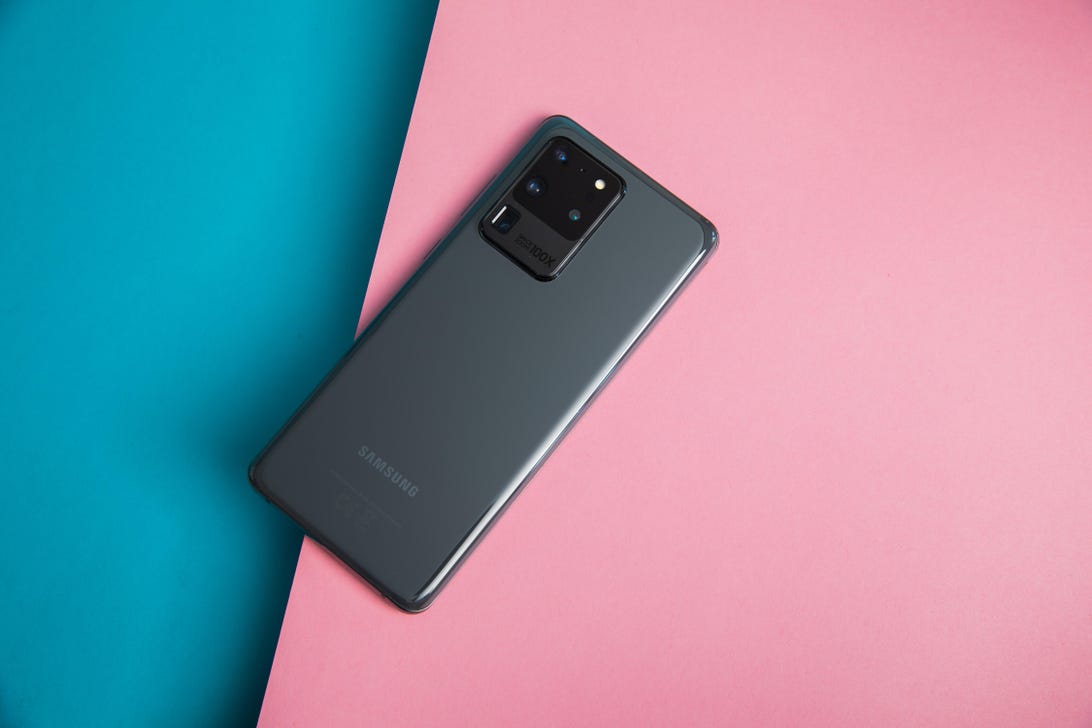

Samsung’s Galaxy S20 Ultra.
Andrew Hoyle/CNET
Galaxy S22 Ultra vs. Galaxy S20 Ultra
The Galaxy S20 Ultra is 2 years old, but it still has plenty to offer. The biggest differences between the S20 Ultra and S22 Ultra are the latter’s inclusion of Samsung’s S Pen stylus, its newer processor and some moderate camera changes. These are incremental improvements that make the Galaxy S22 Ultra better than its predecessors. However, there’s nothing that makes this phone feel wildly different from the Galaxy S20 Ultra.
Both phones are around the same size, but the S20 Ultra is slightly larger at 6.9 inches compared with the S22 Ultra’s 6.8-inch display. The S20 Ultra also packs more pixels per inch, and each phone can boost its screen’s refresh rate up to 120Hz for a more fluid experience. Both devices also both have a 40-megapixel selfie camera and the same battery capacity. Both phones also have 45-watt fast-charging, although you’ll have to purchase the required adapter separately.
The Galaxy S22 Ultra and S20 Ultra have similar camera systems, although there are some differences when it comes to their zooming capabilities. Both phones have a 108-megapixel main sensor and a 12-megapixel ultrawide sensor. But the Galaxy S22 Ultra has two 10-megapixel telephoto lenses, while the S20 Ultra has one 48-megapixel telephoto lens and a depth sensor.
That dual telephoto camera gives the S22 Ultra some advantages when it comes to quality and ease of use. You get a true optical zoom at either 3x or 10x on the Galaxy S22 Ultra, whereas the S20 Ultra has a hybrid optic zoom system that uses some digital cropping to achieve the desired zoom level. Zooming in should also feel steady and more smooth on the Galaxy S22 Ultra compared with the S20 Ultra. The Galaxy S22-lineup phones can also take clearer and brighter photos in the dark and are generally better with color and contrast.
All of these changes make the S22 Ultra feel like a step forward, but the Galaxy S20 Ultra already has an excellent camera. The Galaxy S22 Ultra’s changes improve photo quality rather than adding drastically different features and shooting modes. However, if you’ve been frustrated by the Galaxy S20 Ultra’s autofocus issues, you might find yourself in more of a hurry to upgrade.
What you’ll really have to ask yourself is whether it’s worth upgrading for the S Pen. That’s the key distinction between the S22 Ultra and the S20 Ultra. The S Pen feels like a nice bonus rather than a necessity for the Galaxy S22 Ultra. But given the popularity that Samsung’s Galaxy Note has cultivated over the last decade, I imagine there are plenty of people who might disagree. The S Pen lets you jot down notes (even when the screen is turned off), sketch, mark up screenshots and other documents and translate text, among other tasks. The stylus can even function as a remote control for the phone’s camera.
The bottom line: Unless you really want the S Pen, there isn’t a major reason to upgrade to the Galaxy S22 Ultra from the Galaxy S20 Ultra. Both phones have a giant screen with a high refresh rate for smoother scrolling, and they have similar cameras. They also have the same battery capacity. The Galaxy S22 Ultra does get some camera improvements, particularly when zooming or taking low-light photos. But the changes aren’t drastic enough to encourage most people to upgrade just yet.
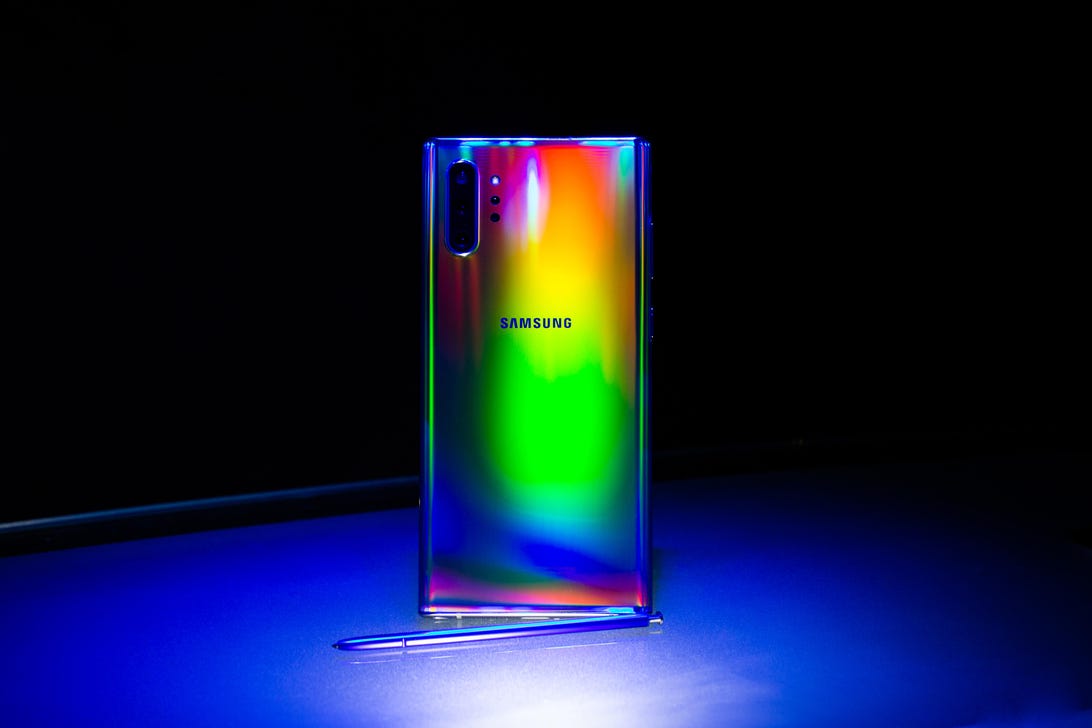

Samsung’s Galaxy Note 10 Plus.
Angela Lang/CNET
Galaxy S22 Ultra vs. Galaxy Note 10 Plus
Just as with the other phones on this list, the biggest reason to upgrade from the Galaxy Note 10 Plus to the Galaxy S22 Ultra is its camera. But the upgrades are more than incremental this time. The Galaxy Note 10 Plus’ triple-lens camera has a much more limited zoom range than the Galaxy S22 Ultra’s, and it’s also missing the 108-megapixel main sensor that debuted on the Galaxy S20 Ultra.
For the purposes of this article, we’ve decided to compare the Note 10 Plus because it has a noticeably larger screen than the regular Note 10 (6.8 inches versus the standard model’s 6.3-inch display). That makes it a more straightforward comparison against the Galaxy S22 Ultra.
Samsung’s new top-of-the-line phone has four main camera lenses: a 108-megapixel main sensor, 12-megapixel ultrawide camera and two 10-megapixel telephoto lenses. The Galaxy Note 10 Plus, comparatively, has a 12-megapixel wide camera, a 16-megapixel ultrawide camera, a 12-megapixel telephoto camera and a depth sensor.
For casual photographers, the Note 10 Plus‘ triple camera might be adequate enough. But those who prioritize camera quality will find a lot to love about the S22 Ultra. It can zoom up to 10x optically and 100x digitally, while the Galaxy Note 10 Plus only has a 2x optical zoom and 10x digital zoom. That’s a big difference that will feel significant to anyone who frequently takes photos from a distance, as perhaps at sporting events or concerts.
Otherwise, the Galaxy S22 Ultra brings extras like a 120Hz refresh rate screen, a sharper 40-megapixel selfie camera, support for 8K video recording, a much newer processor and a larger battery. That said, both phones have large and vibrant 6.8-inch screens that are ideal for reading and watching video, and they both come with the S Pen. But the Galaxy S10 Plus also has more memory and storage at the base level than the Galaxy S22 Ultra, and there’s no microSD card slot on Samsung’s newest Ultra phone.
The bottom line: Yes, the Galaxy S22 Ultra is worth the upgrade if you have the Galaxy Note 10 Ultra, particularly if you can find a good trade-in deal. But the answer will depend on your needs and preferences. If photography is a huge priority, the S22 Ultra’s upgraded camera will feel like a major improvement. The drastically improved zoom, better low-light performance and overall improvements to color and contrast make it a more versatile and capable camera overall. But if you mostly just care about having an attractive phone with a big screen, you can probably get by with your Note 10 Plus for a bit longer. If you have the non-5G model, the S22 Ultra gives you even more of a reason to upgrade.
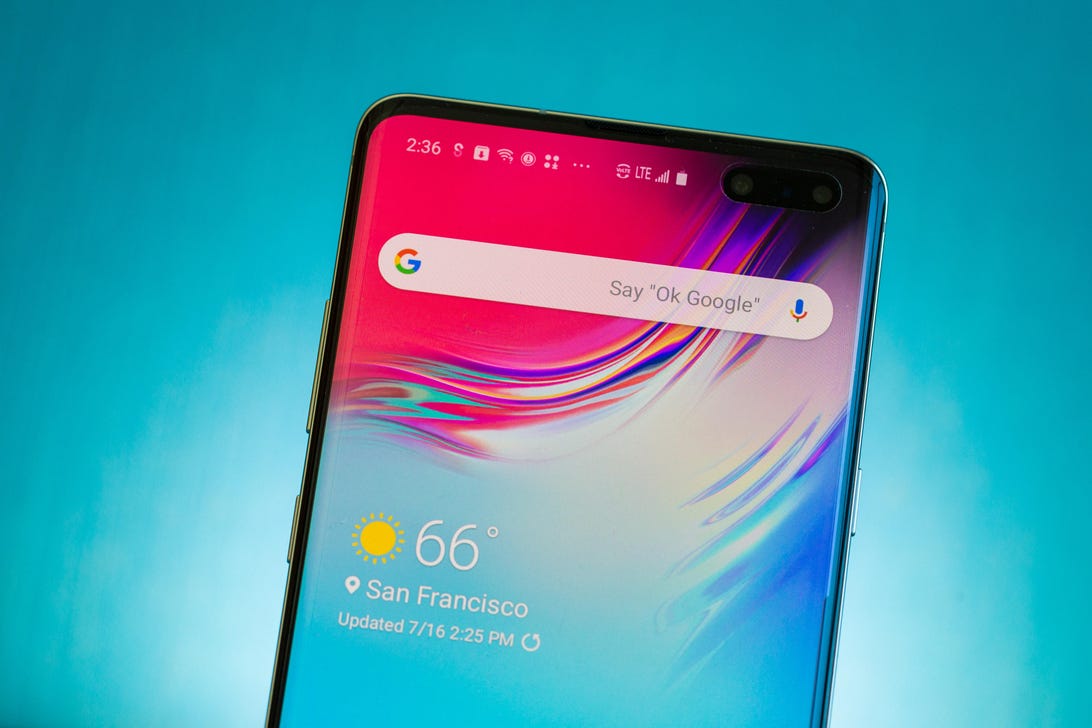

Samsung’s Galaxy S10 5G.
Angela Lang/CNET
Galaxy S22 Ultra vs. Galaxy S10 5G
The Galaxy S10 5G was Samsung’s high-end flagship phone from 2019, and it has a lot in common with the Galaxy Note 10 Plus. With that in mind, similar advice applies if you have a Galaxy S10 5G. It’s worth the upgrade, particularly if you love taking photos and prioritize having a phone with top-notch zooming capabilities. But you can also probably get by with your current phone if you don’t necessarily care about having the best camera and purchased the S10 5G mostly for its giant screen.
The Galaxy S10 5G has a 12-megapixel wide camera, a 12-megapixel telephoto camera, a 16-megapixel ultrawide camera and a depth sensor, just like the Note 10 Plus. As such, all of the benefits mentioned above apply to those upgrading from the Galaxy S10 5G, too. Samsung’s newest premium phone brings significantly better zoom, improved photos in low light, a sharper selfie camera and better overall image quality compared with the S10 5G, plus 8K video recording and a larger battery. The difference in performance is also likely to be more noticeable when upgrading from a 3-year-old phone like the S10 5G.
The Galaxy S22 Ultra’s screen is also slightly larger than the S10 5G’s (6.8 inches versus 6.7 inches). But more importantly, you can increase the refresh rate up to 120Hz to make scrolling feel more seamless. And of course, it also comes with Samsung’s S Pen stylus to make better use of that large screen.
The bottom line: Yes, the Galaxy S22 Ultra is worth upgrading if you own a Galaxy S10 5G. The Galaxy S22 Ultra brings features that are legitimately new rather than incremental upgrades, such as an included S Pen and an overhauled camera with significantly better zoom. If you don’t care about these features, you can get by with your Galaxy S10 5G for a little while longer. But for those who prioritize photography in a camera and are ready for something new, the S22 Ultra won’t disappoint.
Samsung Galaxy S22 Ultra vs. older Samsung phones
| Galaxy S22 Ultra | Galaxy S21 Ultra | Galaxy Note 20 Ultra | Galaxy Note 20 | Galaxy S20 Ultra | Galaxy Note 10 Plus | Galaxy S10 5G | |
|---|---|---|---|---|---|---|---|
| Display size, resolution | 6.8-inch AMOLED, 3,088×1,440 pixels | 6.8-inch Dynamic AMOLED 2X, 3,200×1,440 pixels | 6.9-inch Dynamic AMOLED 2X, 3,088×1,440 pixels | 6.7-inch Super AMOLED Plus, 2,400×1,080 pixels | 6.9-inch Dynamic AMOLED 2X, 3,200×1,440 pixels | 6.8-inch Quad HD+ Dynamic AMOLED; 3,040×1,440 pixels | 6.7-inch Quad HD+ Dynamic AMOLED; 3,040×1,440 pixels |
| Pixel density (per inch) | 500ppi | 515ppi | 496ppi | 393ppi | 511ppi | 498 ppi | 505 ppi |
| Dimensions (millimeters) | 77.9×163.3×8.9mm | 75.6×165.1×8.9mm | 164.8×77.2×8.1mm | 161.6×75.2×8.3mm | 76×166.9×8.8mm | 162.3×77.2×7.9mm | 162.6×77.1×7.94mm |
| Weight (ounces, grams) | 8.07 oz; 229g | 8.07 oz; 229g | 7.33 oz, 208g | 6.84 oz, 194g | 7.76 oz; 220g | 6.91 oz; 196g | 6.98 oz; 198g |
| Mobile software (shipped at launch) | Android 12 | Android 11 | Android 10 | Android 10 | Android 10 | Android 9 | Android 9 |
| Camera | 108MP (wide), 12MP (ultrawide) 10MP (3x telephoto) 10MP (10x telephoto) | 108MP (wide), 12MP (ultrawide), 10MP (3x telephoto), 10MP (10x telephoto) | 12MP (ultrawide), 108MP (wide-angle), 12MP (telephoto) | 12MP (ultrawide), 12MP (wide-angle), 64MP (telephoto) | 108MP (wide-angle), 48MP (telephoto), 12MP (ultrawide), time-of-flight camera | 12MP (wide-angle), 16MP (ultrawide-angle), 12MP (telephoto), 3D depth (HQVGA) | 12MP (wide-angle), 16MP (ultrawide-angle), 12MP (telephoto), 3D depth (HQVGA) |
| Front-facing camera | 40MP | 40MP | 10MP | 10MP | 40MP | 10MP | 10MP, 3D depth (HQVGA) |
| Video capture | 8K, 4K | 8K, 4K | 8K, 4K | 8K, 4K | 8K, 4K | 4K | 4K |
| Processor | Snapdragon 8 gen 1 | Qualcomm Snapdragon 888 | Qualcomm Snapdragon 865+ | Qualcomm Snapdragon 865+ | Qualcomm Snapdragon 865 5G | Qualcomm Snapdragon 855 | Qualcomm Snapdragon 855 |
| RAM/storage | 8GB + 128GB ; 12GB + 256GB; 12GB+512GB; 12GB+ 1TB | 16GB + 512GB; 12GB + 256GB; 12GB + 128GB | 12GB + 128GB; 12GB + 512GB | 8GB + 128GB | 12GB + 128GB; 12GB + 256GB; 16GB + 512GB | 12GB + 256GB; 12GB + 512GB | 8GB + 256GB; 8GB + 512GB |
| Expandable storage | None | None | Up to 1TB | None | Up to 1TB | Up to 1TB | None |
| Battery/charger | 5,000 mAh | 5,000 mAh | 4,500 mAh | 4,300 mAh | 5,000 mAh | 4,300 mAh | 4,500 mAh |
| Fingerprint sensor | In-display | In-display | In-display | In-display | In-display | In-display | In-display |
| Connector | USB-C | USB-C | USB-C | USB-C | USB-C | USB-C | USB-C |
| Headphone jack | No | No | No | No | No | No | Yes |
| Special features | 5G (mmw/Sub6), bundled S Pen, IP68 rating, 120Hz display, UWB, Wireless Power Share, 100x Space Zoom (digital), 10x optical zoom, 45W charging support (sold separately) | 5G (mmw/Sub6), S Pen support (not included), IP68 rating, 120Hz display, UWB, Wireless Power Share, 100x Space Zoom (digital), 10x optical zoom | 5G (mmw/Sub6), 5x optical zoom, 120Hz display; UWB sharing, S Pen included, Wireless PowerShare, IP68 rating | 5G (mmw/Sub6); S Pen included; Wireless PowerShare; water-resistant (IP68) | 5G (mmw/Sub6); 120Hz refresh rate; 100X zoom (digital); Wireless PowerShare; IP68 rating | 5G (mmw/Sub6 on 5G model); S Pen included; Wireless PowerShare; IP68 rating | 5G (mmw/Sub6); Wireless PowerShare; 3D depth cameras (not for face unlock); IP68 rating |




